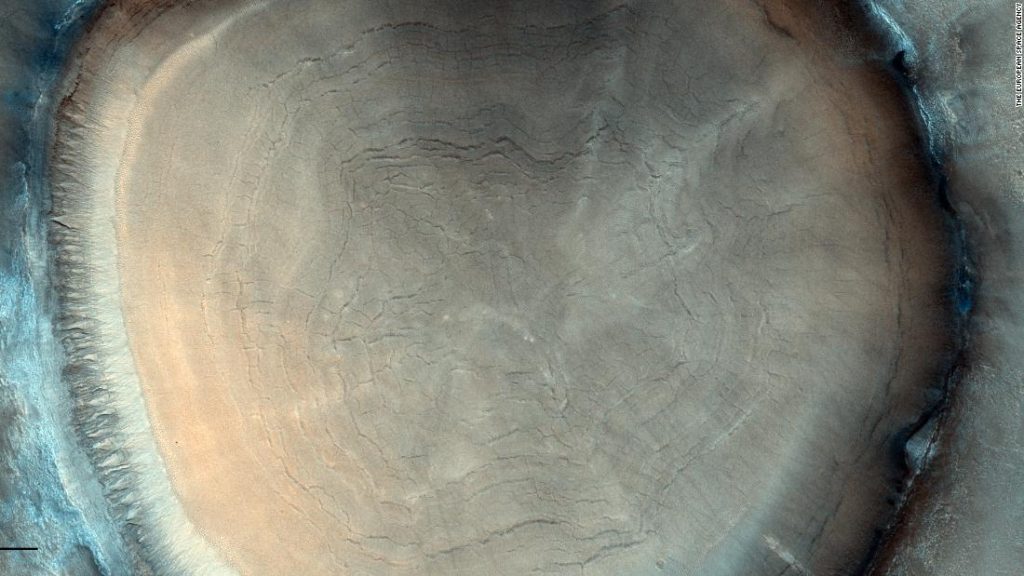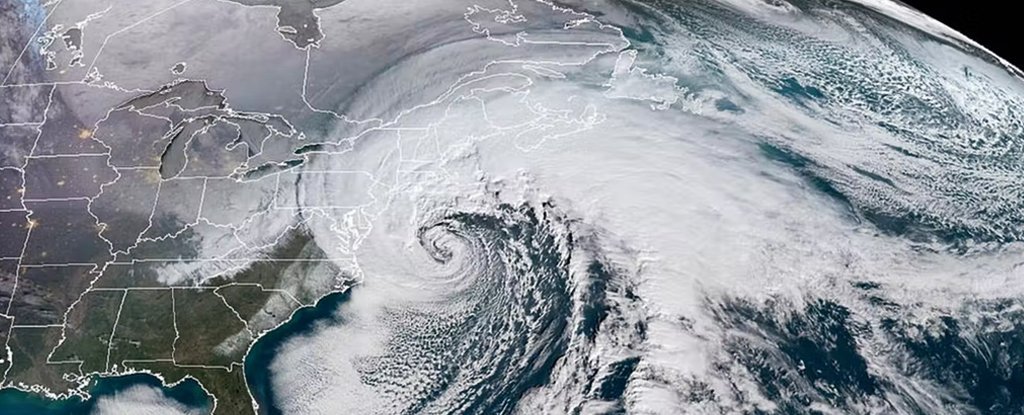According to a study involving captured images of the Red planet, it is found that a concave depression on the surface of Mars has been somehow carved by a massive impact. The research on the same thing has revealed some aspects of the history of Mars, including water and ice.

As it can be seen in the image that the texture has expanding rings that seem like tree rings. But these rings, radiating out from the center of the crate, are not actually tree rings. The newly released image was captured by the ESA/Roscosmos ExoMars Trace Gas Orbiter’s CaSSIS instrument in Mars’s northern hemisphere during the Spring season.
Mars can be freezing cold even in warmer months. This crater in Acidalia Planitia likely has frozen material year-round, and that material is likely comprised of water ice. Water ice, being a strange substance, expands as it cools. As the temperature continues to fluctuate on Mars, the material that is rich in water ice at the bottom of the pictured crater would likewise expand and contract.

As a result of this recurring expansion and contraction, concentric fracture patterns across the crater floor are created, resulting in rings that are creating the illusion of a tree stump. Such explorations can help scientists to understand Mars’s Water history. At 51.9 degrees latitude, which is the current position of the crater, it is too warm for water ice deposits to form. The angle of Mars’s axial tilt changes dramatically over long timescales.
This thing is an indication of the fact that the rings-based deposits were actually laid down at some point in the past when the tilt of the Martian axis allowed for water ice deposits to form at lower latitudes than they do today. Thus the brief study of the history of water on Mars is one of the most prominent goals of the study of Mars.


